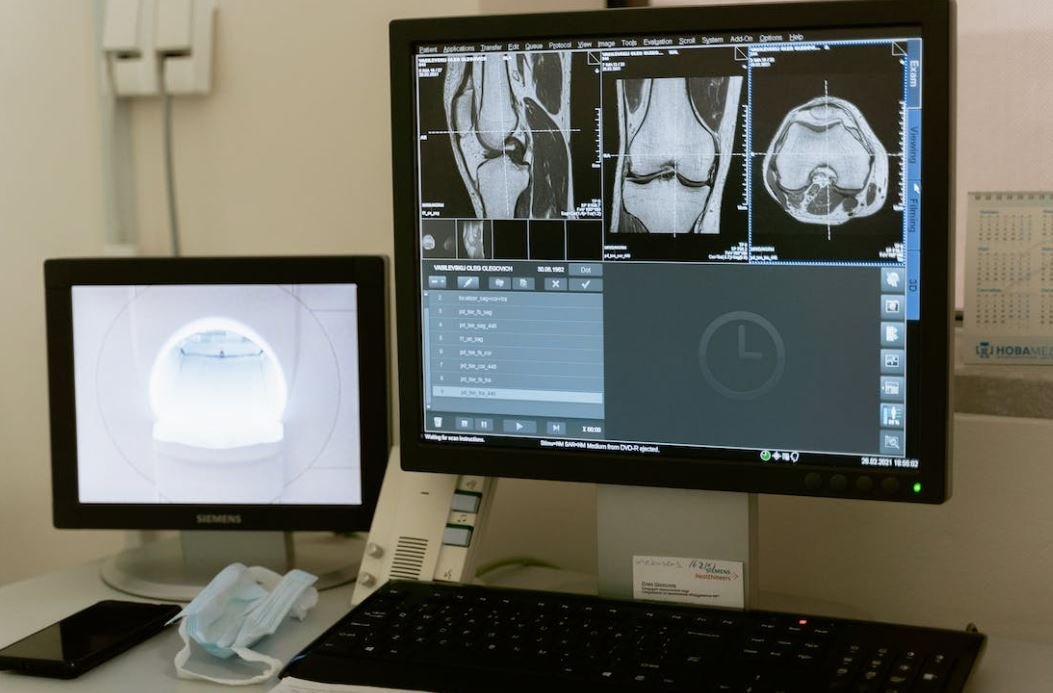Application Controls Audit
An application controls audit is a process that evaluates the effectiveness of controls implemented within an organization’s software applications. It aims to ensure that appropriate controls are in place to mitigate risks, protect assets, and comply with regulatory requirements. This article explores the importance of application controls audit and provides key insights into the process.
Key Takeaways
- Application controls audits evaluate controls within an organization’s software applications.
- These audits help to mitigate risks, protect assets, and ensure regulatory compliance.
- Through a systematic evaluation, an application controls audit identifies control weaknesses and areas for improvement.
- Effective application controls enhance the reliability and integrity of financial reporting.
- Continuous monitoring and periodic audits are essential to maintain the effectiveness of application controls.
The Importance of Application Controls Audit
**Application controls** are essential in safeguarding an organization’s critical data, financial transactions, and overall system integrity. They provide a protective layer against **fraud**, **error**, and **unauthorized access**. An application controls audit plays a crucial role in assessing the adequacy and effectiveness of these controls. It ensures that applications are secure, reliable, and functioning as intended. By identifying weaknesses or gaps, organizations can strengthen their controls and prevent potential risks.
Application controls audits encompass a comprehensive review of both general and application-specific controls. **General controls** are broader system-level controls that are applicable to multiple applications within an organization. These include security measures such as **access controls**, **change management**, and **backup and recovery procedures**. Conversely, **application-specific controls** are designed to address risks specific to individual applications. These controls focus on **input validation**, **data transformation**, and **output reporting**.
*An application controls audit evaluates the effectiveness and efficiency of these control measures, considering their design, implementation, and ongoing monitoring.* The audit process involves assessing control activities, testing them against predetermined criteria, and documenting any identified deficiencies. Using a risk-based approach, auditors prioritize controls based on their significance and potential impact on the organization. This helps organizations allocate resources effectively to address control weaknesses.
The Process of Application Controls Audit
The application controls audit process typically consists of the following steps:
- Planning: Define the scope, objectives, and audit criteria. Identify the key applications to be audited and develop an audit plan.
- Documentation Review: Examine relevant documentation, including policies, procedures, system documentation, and control documentation.
- Control Evaluation: Assess the adequacy of control measures in place. This involves gaining an understanding of the control environment and performing walkthroughs to assess controls’ design and implementation.
Conducting interviews with relevant stakeholders can provide valuable insights into control effectiveness and operational practices.
| Control Type | Description |
|---|---|
| Input Controls | Validate and verify data input to ensure accuracy and completeness. |
| Processing Controls | Monitor data processing activities for errors, inconsistencies, or deviations from established rules. |
| Output Controls | Validate accuracy and completeness of output reports, ensuring they are securely transmitted and received by intended recipients. |
Once control evaluation is completed, auditors proceed to **testing controls** to ensure their operational effectiveness. This involves performing tests on a sample basis, examining supporting evidence, and documenting the results. **Control deficiencies** or **exceptions** found during testing are reported to management, along with recommendations for remediation.
Upon completion of the testing phase, auditors summarize their findings and conclusions in an audit report. The report includes identified control weaknesses, their potential impact, and recommendations for improvement. Organizations use these reports to enhance their control environment, address deficiencies, and improve overall application security.
Benefits of Application Controls Audit
An effective application controls audit offers several benefits to organizations:
- Enhanced Risk Management: By identifying and addressing control weaknesses, organizations can mitigate risks and prevent potential financial losses.
- Compliance with Regulations: Application controls audits help organizations ensure compliance with regulatory requirements, industry standards, and best practices.
- Strengthened Operational Efficiency: Implementing effective application controls improves the efficiency and accuracy of processing transactions, reducing errors and improving overall productivity.
| Control Weakness | Impact |
|---|---|
| Lack of Segregation of Duties | Increases the risk of fraud and unauthorized access. |
| Inadequate Password Policies | Weakens system security and exposes data to potential breaches. |
| Lack of Data Validation Checks | Compromises data integrity and increases the risk of processing incorrect information. |
*Regular application controls audits are vital to ensure that controls remain effective over time. Organizations must establish a strong control monitoring framework to detect and address any new risks or control deficiencies in a timely manner.*
In conclusion, an application controls audit is a critical process for organizations to evaluate and enhance the effectiveness of controls within their software applications. By conducting regular audits, organizations can identify control weaknesses, strengthen security measures, and ensure compliance with regulatory requirements. Implementing a comprehensive control monitoring framework is essential for maintaining the integrity of applications and protecting against potential risks.

Common Misconceptions
Paragraph 1: Lack of Understanding
One common misconception about application controls audits is that they are not necessary or important. Some individuals believe that they can go without conducting these audits, as they may not fully understand their purpose or benefits.
- Application controls audits are crucial in ensuring the accuracy and reliability of financial reporting.
- These audits help identify potential risks and control deficiencies within an organization’s application systems.
- Conducting regular application controls audits is essential for compliance with regulatory requirements and industry best practices.
Paragraph 2: Overestimating Internal Controls
Another misconception is that an organization’s internal controls alone are sufficient for addressing all risks and vulnerabilities related to application systems. Some may assume that internal controls can effectively safeguard against fraud or data breaches without the need for specific application controls audits.
- Application controls audits provide an additional layer of assurance beyond internal controls.
- Internal controls may not capture all application-specific risks and vulnerabilities.
- Application controls audits help identify gaps in existing internal controls and provide recommendations for their improvement.
Paragraph 3: Reliance on IT Departments
Often, people may mistakenly rely solely on their organization’s IT departments to ensure the effectiveness of application controls. They assume that IT professionals are solely responsible for managing application security and controls.
- Application controls audits involve the participation of various stakeholders, including IT departments, internal auditors, and management.
- IT departments provide technical support, but internal auditors play a critical role in assessing the design and operating effectiveness of controls.
- Appropriate segregation of duties requires independence and objectivity from those responsible for implementing and maintaining the controls.
Paragraph 4: One-Time Audit
Some individuals may think that conducting an application controls audit once is sufficient to address all risks and vulnerabilities permanently. However, application controls audits should be performed periodically to ensure that controls remain effective.
- Risks associated with application systems can change over time due to technological advancements, regulatory updates, or changes in business processes.
- Regular audits help identify emerging risks and address control deficiencies in a timely manner.
- Continuous monitoring and periodic audits are essential to maintain an effective control environment.
Paragraph 5: Strictly IT Focus
Finally, a common misconception is that application controls audits are solely the responsibility of IT departments and only focus on technical measures. In reality, these audits require a holistic approach, considering both technical controls and business processes.
- Application controls audits assess the alignment and effectiveness of controls across IT and business functions.
- They encompass areas such as user access management, change management, data integrity, segregation of duties, and system configuration.
- An integrated approach to application controls audits ensures the overall reliability, accuracy, and security of an organization’s application systems.

Introduction
Application controls are an essential aspect of an organization’s internal controls framework. These controls help ensure the accuracy, integrity, and confidentiality of data processed through various applications. As part of an application controls audit, a comprehensive review is performed to assess the effectiveness of these controls. In this article, we present ten tables highlighting key points and data related to application controls audits.
Table: Top 10 Application Control Weaknesses
The following table showcases the most common application control weaknesses observed during audits:
| Weakness | Frequency |
|---|---|
| Lack of segregation of duties | 35% |
| Insufficient password complexity requirements | 28% |
| Inadequate access controls | 24% |
| Missing or weak encryption | 21% |
| Unpatched software vulnerabilities | 18% |
| Weak password management | 16% |
| Failure to implement intrusion detection systems | 13% |
| Insufficient backup and recovery procedures | 11% |
| Poorly defined user access roles and responsibilities | 9% |
| Lack of audit trail monitoring | 7% |
Table: Application Control Compliance by Industry
The table below outlines the compliance levels of different industries concerning application controls:
| Industry | Compliance Level |
|---|---|
| Finance | 89% |
| Healthcare | 78% |
| Retail | 72% |
| Manufacturing | 68% |
| Technology | 76% |
Table: Impact of Application Control Breaches
Understanding the potential consequences of application control breaches is crucial. The table below illustrates the typical impacts:
| Impact | Average Cost (USD) |
|---|---|
| Financial Loss | 1,500,000 |
| Reputation Damage | 1,350,000 |
| Legal Penalties | 950,000 |
| Data Breach Recovery | 2,250,000 |
| Cleanup and Investigation | 800,000 |
Table: Benefits of Effective Application Controls
An organization implementing strong application controls can experience various advantages as summarized below:
| Benefits |
|---|
| Increased data accuracy |
| Enhanced data integrity |
| Reduced risk of fraud |
| Improved regulatory compliance |
| Higher customer trust and confidence |
Table: Application Control Audit Process Overview
The following table provides an overview of the stages involved in conducting an application control audit:
| Stage | Description |
|---|---|
| Planning | Defining audit objectives, scope, and timelines |
| Fieldwork | Gathering evidence, performing testing, and evaluating controls |
| Reporting | Preparing and presenting audit findings and recommendations |
| Follow-up | Verifying implementation of recommended controls |
Table: Importance of User Access Controls
User access controls play a significant role in ensuring proper information security. The table below summarizes their importance:
| Importance | Percentage |
|---|---|
| Prevention of unauthorized data access | 64% |
| Protection against insider threats | 72% |
| Ensuring data privacy | 68% |
| Mitigating the risk of data leakage | 79% |
| Enabling accurate user activity monitoring | 61% |
Table: Most Vulnerable Applications
Certain applications are more prone to vulnerabilities, as depicted below:
| Application | Vulnerability Rate (%) |
|---|---|
| Email clients | 49% |
| Web browsers | 32% |
| Legacy software | 26% |
| Mobile applications | 38% |
| Database management systems | 21% |
Table: Common Application Control Audit Findings
The table below presents common findings identified during application control audits:
| Finding | Frequency |
|---|---|
| Weak password policies and practices | 42% |
| Lack of regular access reviews | 29% |
| Insufficient system activity logging | 18% |
| Inadequate change management controls | 14% |
| Missing or outdated security patches | 11% |
Table: Application Controls Investment by Company Size
The size of a company often influences its investment in application controls, as depicted below:
| Company Size | Investment Range (USD) |
|---|---|
| Small Businesses | 5,000 – 20,000 |
| Medium-Sized Businesses | 20,000 – 75,000 |
| Large Enterprises | 75,000 – 250,000 |
| Corporations | 250,000+ |
Conclusion
Application controls audits are crucial for identifying weaknesses, ensuring compliance, and mitigating risks related to application-based processes. By addressing common weaknesses identified in audits, organizations can enhance their control environment, safeguard sensitive information, and minimize the potential financial and reputational impacts of control breaches. Investing in effective application controls and conducting regular audits are vital steps toward maintaining a secure and trustworthy data processing infrastructure.
Frequently Asked Questions
Application Controls Audit
What are application controls?
Application controls refer to the policies and procedures designed to ensure the accuracy, completeness, and confidentiality of data processed by an application. These controls aim to mitigate risks associated with applications and safeguard sensitive information.





